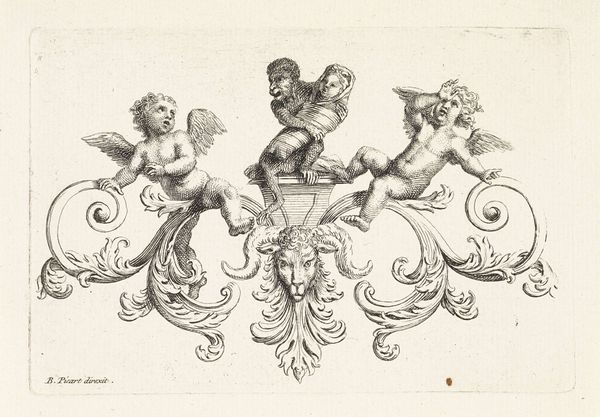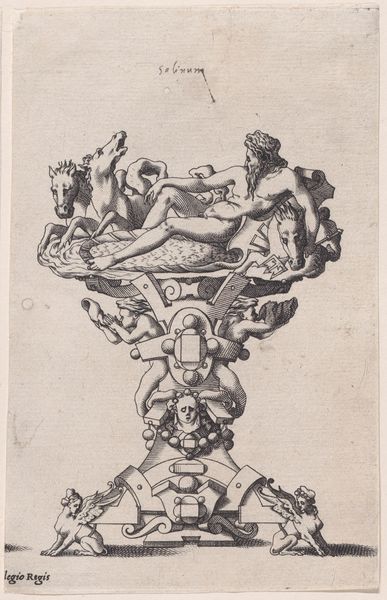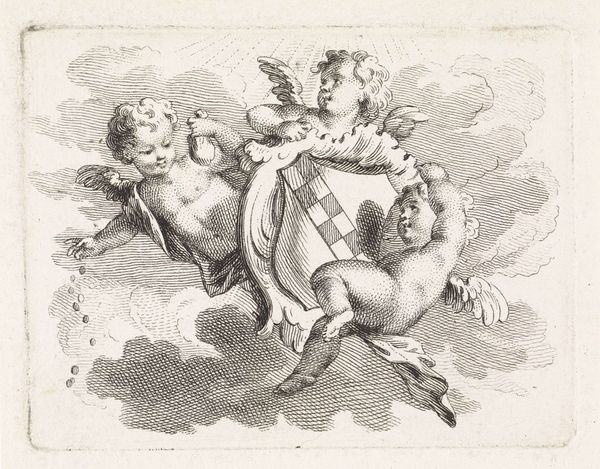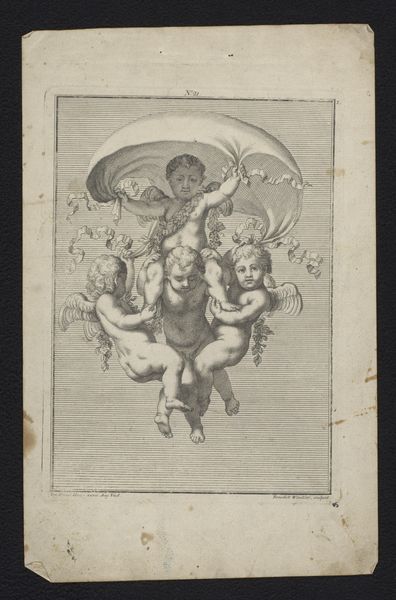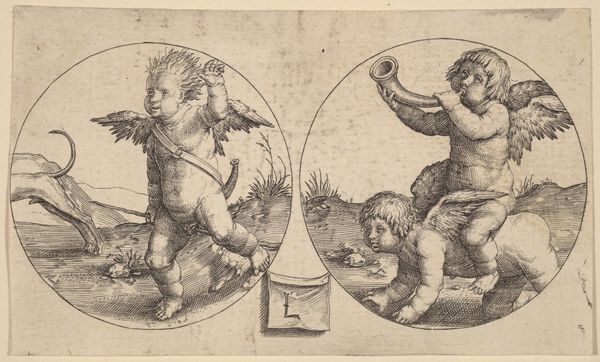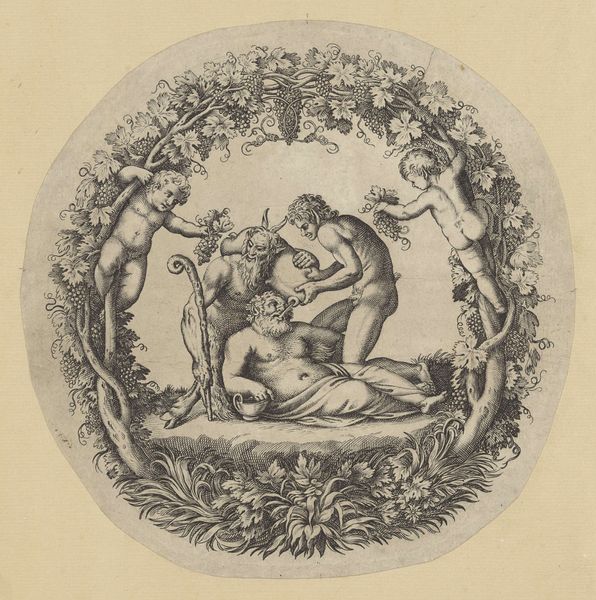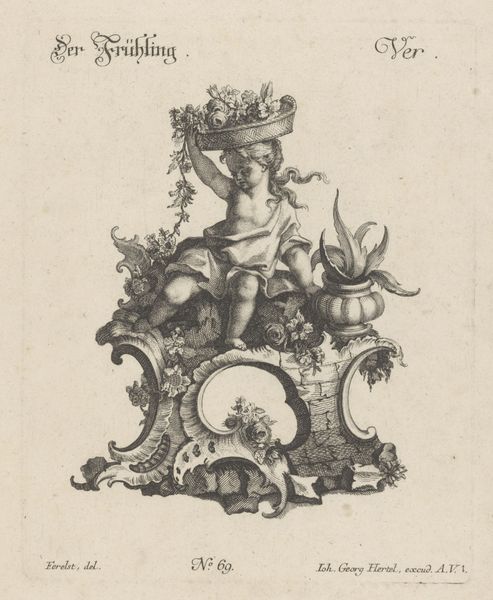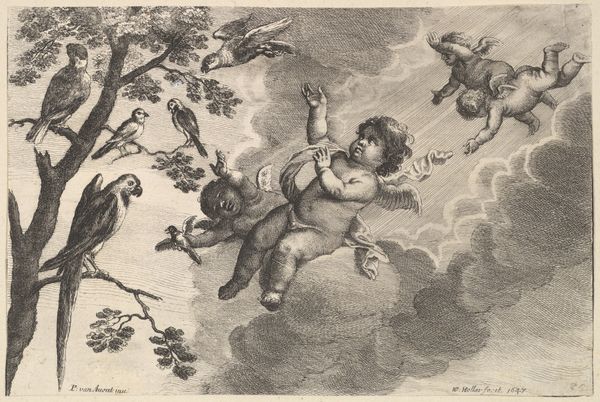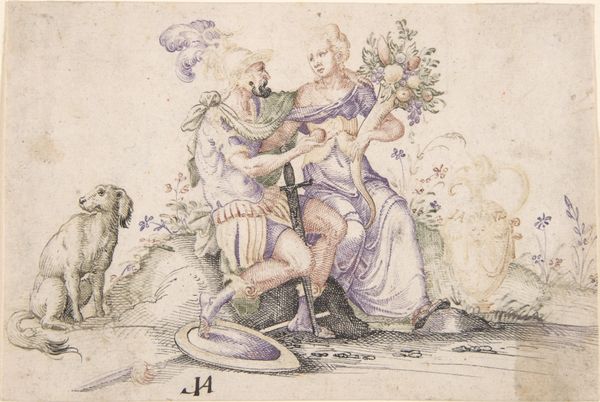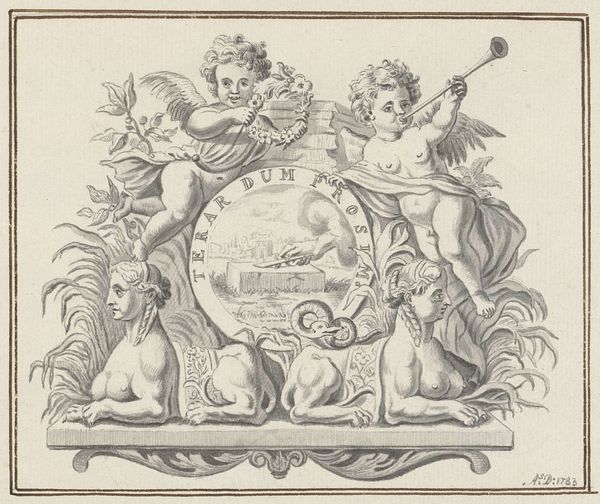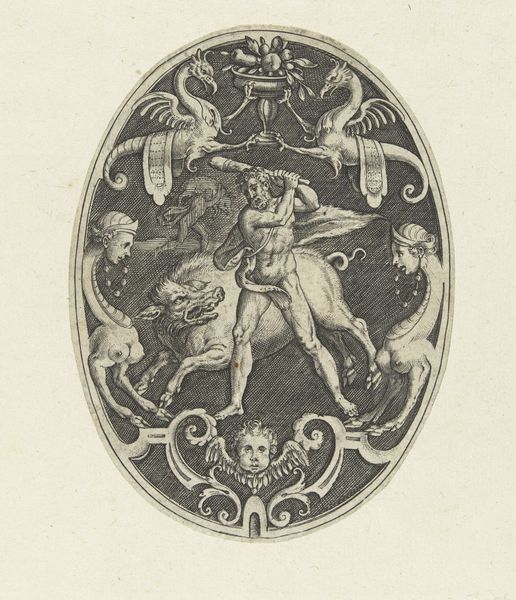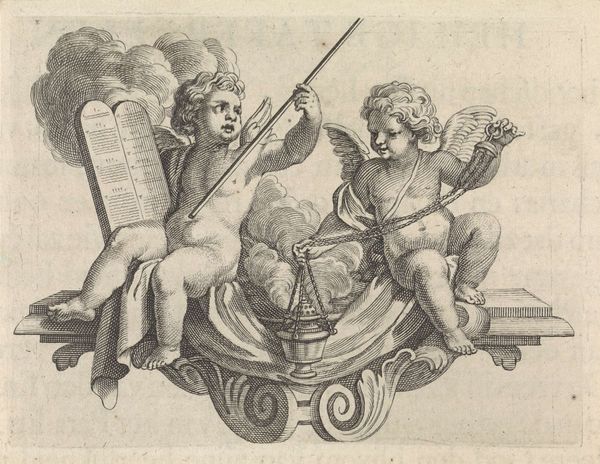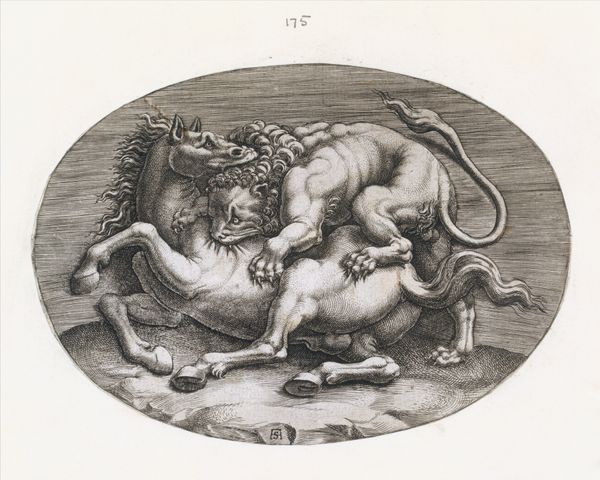
drawing, paper, ink
#
drawing
#
allegory
#
figuration
#
paper
#
ink
#
rococo
Dimensions: height 115 mm, width 127 mm
Copyright: Rijks Museum: Open Domain
Jan de Goeje made this ornamental design with two playful putti in 1770 using pen and brown ink, brush in grey and watercolour. The delicacy of the pen work and the fluid washes of color speak to the artist's mastery, the material qualities enhancing the overall effect of lightness and grace. It’s important to remember that the use of paper and pigments like watercolour wasn't always common, as they became widely available only with the rise of industrial production. De Goeje created this design within a larger social and cultural context. Ornament served as a means of conveying status and sophistication, yet also served an important role in democratizing artistic expression through printed media and drawing classes. It represents the increasing commodification of art and design, reflecting broader shifts in labor, taste, and consumption during the 18th century. Ultimately, this work invites us to look beyond traditional notions of fine art. By examining its material composition, artistic process, and historical context, we can appreciate the intricate relationship between art, craft, and design.
Comments
No comments
Be the first to comment and join the conversation on the ultimate creative platform.
